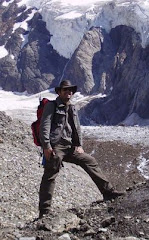The ice ages on Earth could be influenced by CO2 levels differently than previously believed. The study of speleotherms in the cave of Vallgornera situated on the Spanish island of Mallorca revealed that the polar caps were as small as today 81,000 years ago - despite lower CO2 levels.
A team of scientists of the University of Iowa has studied aragonitic and calcitic mineral deposits from five caverns situated; depending of the sea level - itself varying by the amount of “captured” water in ice caps up to 130m - the caves were inundated and different mineralogical deposition occurred. The dated samples suggest that the sea level around 81,000 years ago was about a meter above the current value. "We have reconstructed the sea level with really high precision," says researcher Doral to the German newspaper “
SPIEGEL ONLINE”.Co-author Bogdan Onac from the University of South Florida explains that Mallorca is ideal for this kind of research because tectonically stable and the observed variations should be “true” variations of sea level, not falsified by geological movements or isostatic rebound.
If the sea level 81,000 years ago was actually where the researchers suggest, an interesting problem arises: it doesn’t support the calculated 100.000-year cycle of glacial advances. Also it contradicts the direct ice-CO2 connections - despite low CO2 concentrations, and weaker greenhouse effect, the ice caps on earth were not as great as previously tough, and in dimensions comparable to modern conditions.
So are climate denialists right, and is there no such thing as anthropogenic greenhouse effect?
No, the authors want to take the results in a scientific context: the research doesn’t make claims about the global temperature during this time, only about the possible ice volume, and the amount of ice is not only controlled by temperature, but also for example by insolation of the sun, stronger 80.000 years ago then today. "What happened 80,000 years ago, is not the same as what happened today," said Onac.
REFERENCES:
 Fig.1. Foto/Copyright: Robert Gutwenger Lienz (source)
Fig.1. Foto/Copyright: Robert Gutwenger Lienz (source)






